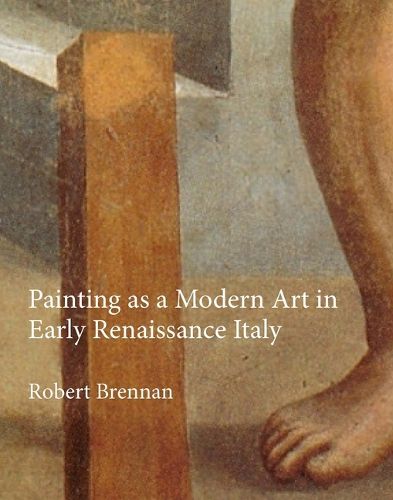Readings Newsletter
Become a Readings Member to make your shopping experience even easier.
Sign in or sign up for free!
You’re not far away from qualifying for FREE standard shipping within Australia
You’ve qualified for FREE standard shipping within Australia
The cart is loading…






Concepts of modernity have played a constitutive role in the canon of European art history at least since Giorgio Vasari, who looked back upon Giotto as the founder of modern art (arte moderna). The aim of this book is to establish a prehistory of Vasari’s view. Was Vasari merely projecting a sixteenth-century concept of artistic modernity onto the fourteenth and fifteenth centuries, or were the artists of that period guided by some notion of modernity as well? Brennan argues that discussions of modern art were in fact widespread during Giotto’s time, according to the broad, medieval definition of art (ars) that encompassed activities as diverse as arithmetic, poetry, carpentry, music, and preaching. Within this discourse, to make an art modern meant setting it on a new foundation in science (scientia) and rationalizing it accordingly. By the year 1400, Florentine writers such as Cennino Cennini and Franco Sacchetti were applying these same terms and principles to Giotto. In doing so they shed light not only on the structure of artistic development in the fourteenth century, but also on the way Giotto’s legacy shaped the prerogatives of artists in the early fifteenth - that is, in the generation of Brunelleschi, Donatello, and Masaccio.
$9.00 standard shipping within Australia
FREE standard shipping within Australia for orders over $100.00
Express & International shipping calculated at checkout
Concepts of modernity have played a constitutive role in the canon of European art history at least since Giorgio Vasari, who looked back upon Giotto as the founder of modern art (arte moderna). The aim of this book is to establish a prehistory of Vasari’s view. Was Vasari merely projecting a sixteenth-century concept of artistic modernity onto the fourteenth and fifteenth centuries, or were the artists of that period guided by some notion of modernity as well? Brennan argues that discussions of modern art were in fact widespread during Giotto’s time, according to the broad, medieval definition of art (ars) that encompassed activities as diverse as arithmetic, poetry, carpentry, music, and preaching. Within this discourse, to make an art modern meant setting it on a new foundation in science (scientia) and rationalizing it accordingly. By the year 1400, Florentine writers such as Cennino Cennini and Franco Sacchetti were applying these same terms and principles to Giotto. In doing so they shed light not only on the structure of artistic development in the fourteenth century, but also on the way Giotto’s legacy shaped the prerogatives of artists in the early fifteenth - that is, in the generation of Brunelleschi, Donatello, and Masaccio.